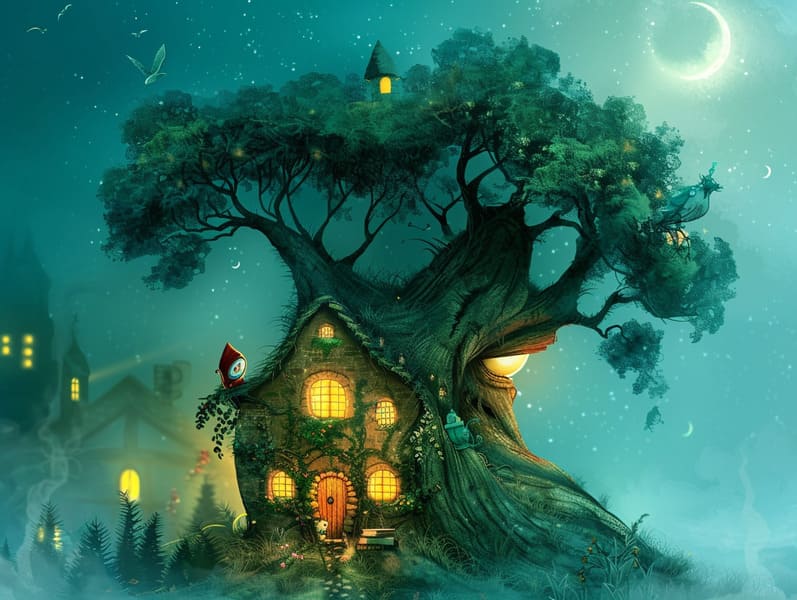The Formation of Timeless Fairy Tales and Their Steadfast Captivation.
The Formation of Timeless Fairy Tales and Their Steadfast Captivation.
Blog Article

Popular fairy tales have deep roots. These stories have been shared from one generation to the next far before they were ever transcribed. They were born from a variety of societies, including Eastern traditions. They were initially transmitted among elders, often carrying themes and messages concerning the societal norms and beliefs of the time.
The famous Grimm duo, Jacob and Wilhelm (the Grimm brothers), were among the first to compile and publish many of these beloved narratives. Their volume, "Grimm's Folk Tales," included tales like "The Story of Cinderella," "Hansel and Grethel," and "Little Snow White," which have since become hallmarks in the world of beloved fairy tales. Similarly, Hans Christian Andersen's fanciful narratives, such as "The Mermaid," and "The Story of the Ugly Duckling," have won hearts worldwide, cementing their place in the pantheon of timeless fairy tales.
Even though they are old, fairy tales remain as impactful as ever, especially as bedtime stories for kids. These charming stories are now available in numerous formats, including beautifully illustrated books, enchanting animations, and free fairy tales online.
Their unwavering allure can be credited to several fascinating points:
Important Morals: Timeless fairy tales often illustrate important moral lessons. Fairy tales like "The Boy Who Cried Wolf" teach the virtue of truth, while "The Tortoise and the Hare" show the benefits of perseverance and modesty. These narratives offer little ones clear distinctions between truth and falsehood, molding their moral compass in a gentle yet important way.
Empathy and Awareness: Ancient fairy tales frequently illustrate beings facing struggles and tests, encouraging young readers to relate with their struggles and champion their triumphs. For instance, "Beauty and Her Beast" shows us the significance of seeing inner beauty to acknowledge the true nature of a soul, enhancing empathy and knowledge.
Cultural Understanding: Many traditional fairy tales are interwoven with the cultural contexts from which they bloomed. Understanding these narratives can provide informative snapshots into different historical contexts, enhancing a sense of cultural understanding and knowledge.
Inventiveness and Imagination: The whimsical elements in traditional fairy tales—talking beasts—activate children’s imaginations. These fairy tales lead readers these guys to extraordinary realms, unleashing imaginative dreams and a sense of awe that stays a lifetime.
Ancient fairy tales are not only fantastical but also didactic. They function as fascinating tools in nurturing various intellectual and emotional capacities in little ones. When traditional fairy tales are voiced, they develop verbal development by bringing new linguistic elements and elaborate sentence structures. This practice also strengthens hearing perception and mental focus, as young ones concentrate deeply, ready to see what happens next.
Furthermore, discussing the themes and characters of old fairy tales can cultivate problem-solving abilities and thought processes. The young are instructed to see patterns, make predictions, and realize cause and effect. These deliberations also contribute to young readers utter their thoughts and feelings, boosting their emotional intelligence.
In today’s technological era, the proliferation of digital storybooks has made these fairy tales more available than ever. Online platforms and online apps present huge assortments of traditional fairy tales that can be read or listened on anytime, anywhere. Fairy tales recited are particularly popular, making available an enjoyable way for children to enjoy these charming tales. Audio stories and narrated videos transport characters and settings to life, often accompanied by enchanting melodies and instrumentals that augment the story adventure.
The timeless appeal of ancient fairy tales lies in their ability to shift to contemporary times while holding onto their central messages. Contemporary adaptations of these fairy tales often highlight more varied characters and modern settings, making them accessible to today’s audience. However, the underlying themes of fortitude, humanity, and fair play remain unchanged, continuing to resonate with kids of all ages.
Fairy tales also offer a sense of assurance and recognition. They put forth a well-arranged narrative with a transparent beginning, middle, and end, often drawing to a close with the conclusion of conflicts and the triumph of good over evil. This uniformity can be comforting for little ones, extending a sense of solidity in an inconstant world.
Ancient fairy tales continue to mesmerize and train new generations, maintaining their magic and pertinence in modern society. As nighttime stories for kids, they yield a perfect blend of fascination and comprehension, cultivating moral values, empathy, and creativity. The existence of online storybooks and the well-received status of fairy tales recited affirm that these classic narratives remain reachable to new generations.
By defending and telling these fairy tales, we continue to commemorate the rich tapestry of folklore and cultural heritage. Whether you are reading a vividly illustrated book, delving into a electronic library, or playing an read-aloud book, the elegance of ancient fairy tales is always within reach. These fairy tales point out of the unwavering power of storytelling and its ability to gather us across time and space.
Be it you are reading a gorgeously illustrated book, enjoying a online collection, or playing an voice book, the spell of Grimm's fairy tales is always within reach.
These fairy tales reveal of the ageless force of narratives and its ability to gather us across centuries and lands, forging a link that captivates and teaches alike.